#1 Managed Vulnerability Scanning Services (Trusted by 1000+ Teams)
Detect and validate vulnerabilities across web, API, and cloud layers with managed vulnerability scanning services. Our team pairs tuned automation with expert vetting and reviews to remove false positives, map findings to compliance, and hand engineers prioritized, SLA-backed remediation steps.

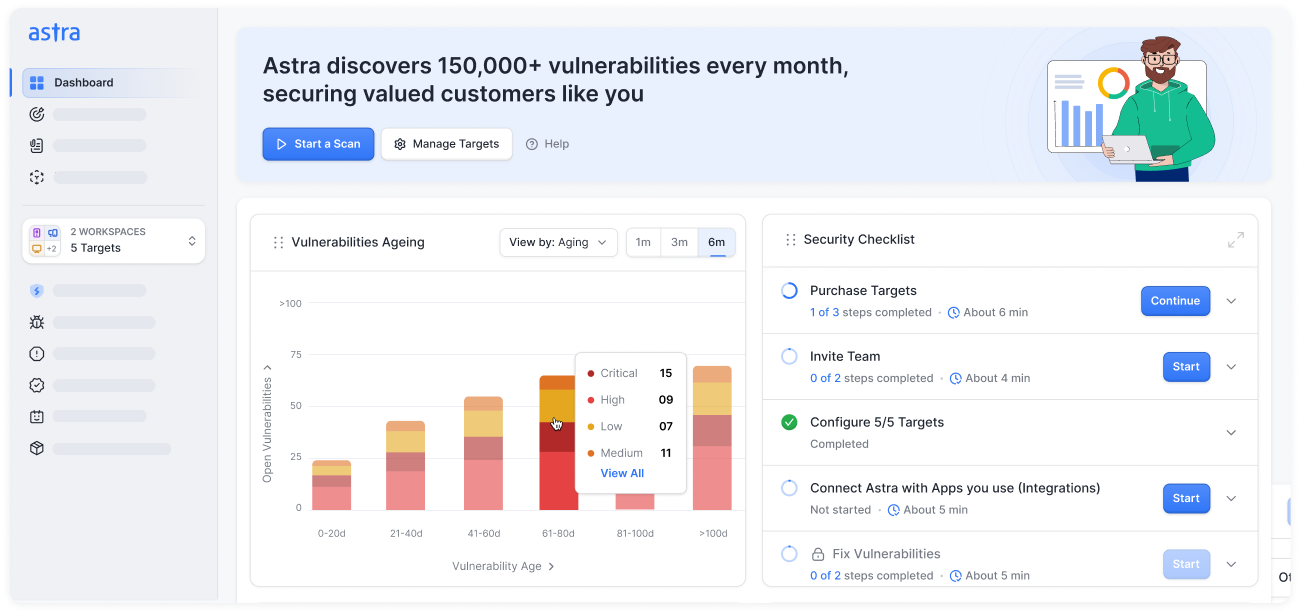










Why choose Astra Security's managed vulnerability scanning services?
Experience our DAST, API, and cloud scanner plans with vetted managed vulnerability scanning built for modern teams with expert-driven testing, smart automation, & continuous protection at scale.
- Focus on real vulnerabilities with noise-free detection logic
- Our experts vet false positives so you don’t waste hours validating noise
- Mark verified issues once to skip them in future scans
- Get expert vulnerability reviews for faster prioritization
- Cut manual tuning as our AI-first vulnerability scanner adapts tests to your app
- Context-aware analysis improves accuracy & guidance with every scan
- Use machine learning models that evolve from real-world exploit data
- Scale testing without increasing security headcount
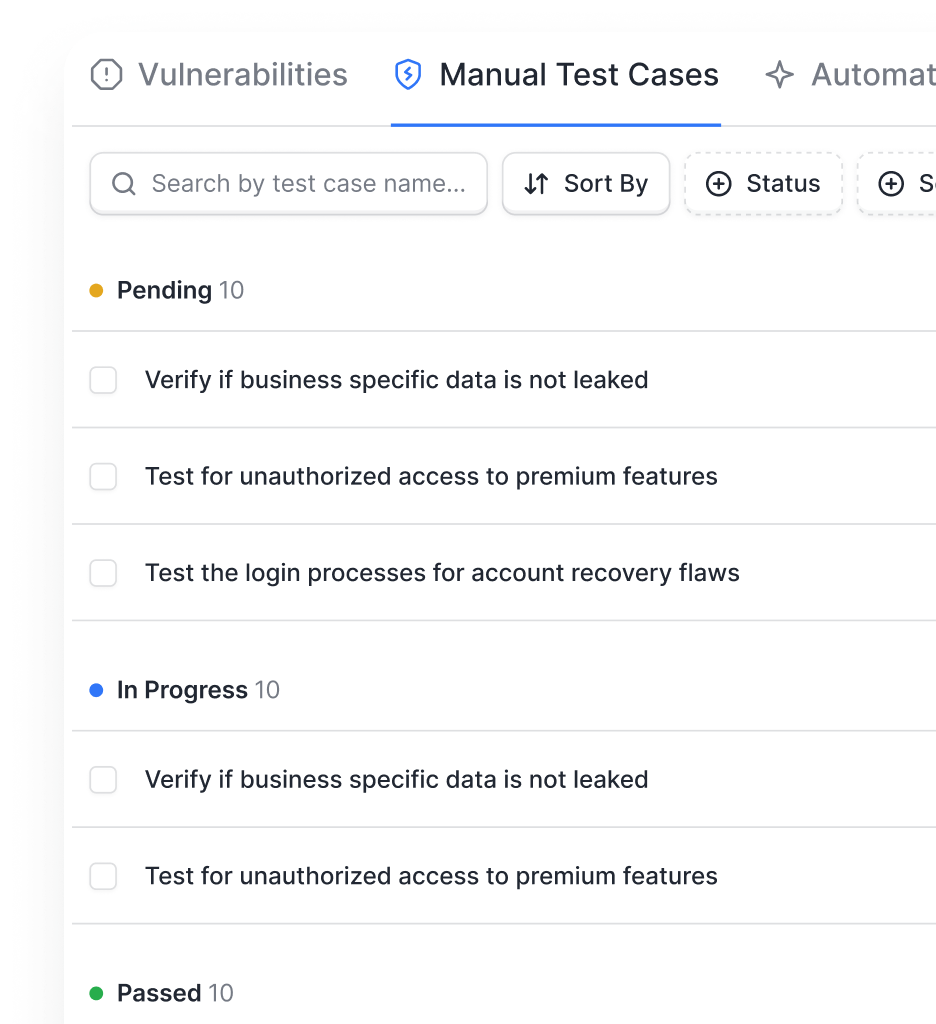
- Get continuous protection across web, API, and cloud
- Avoid alert fatigue with business-impact optimized vulnerabilities & expert-tuned DAST scans
- Stay compliant with automated reports, verified fixes, and targeted automated rescans
- Cut false positives and reduce total cost with the accuracy of vetted and managed vulnerability scans
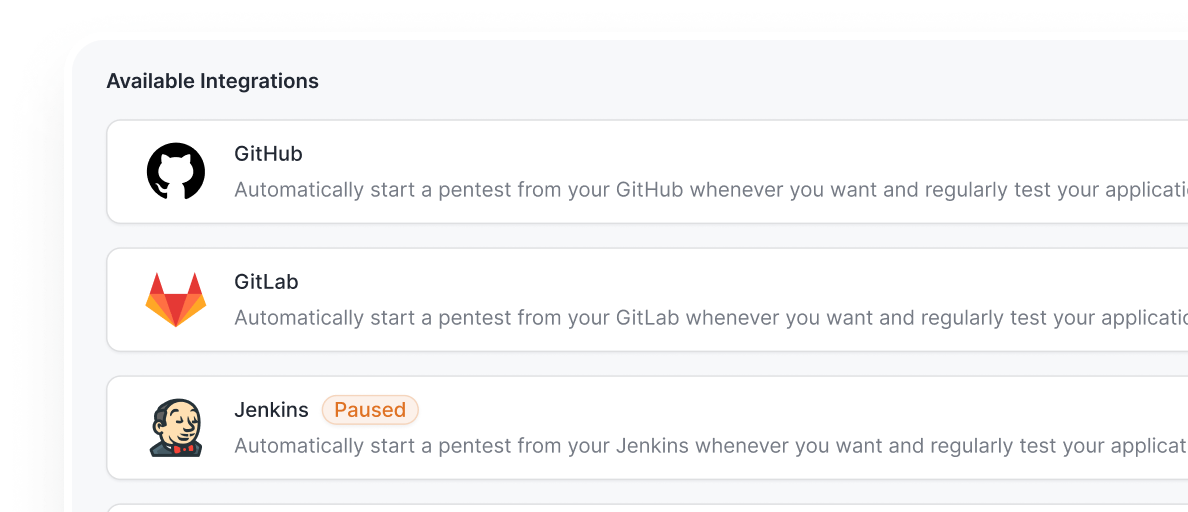
- Integrate testing seamlessly into your CI/CD workflows (GitHub, GitLab, CI, Jenkins, Bitbucket, & more) with zero release delays
- Automate scans, Slack vulnerability alerts, and JIRA ticketing to cut manual work
- Shorten your mean time to remediate with seamless vulnerability workflows
- Maintain speed-to-market without compromising security
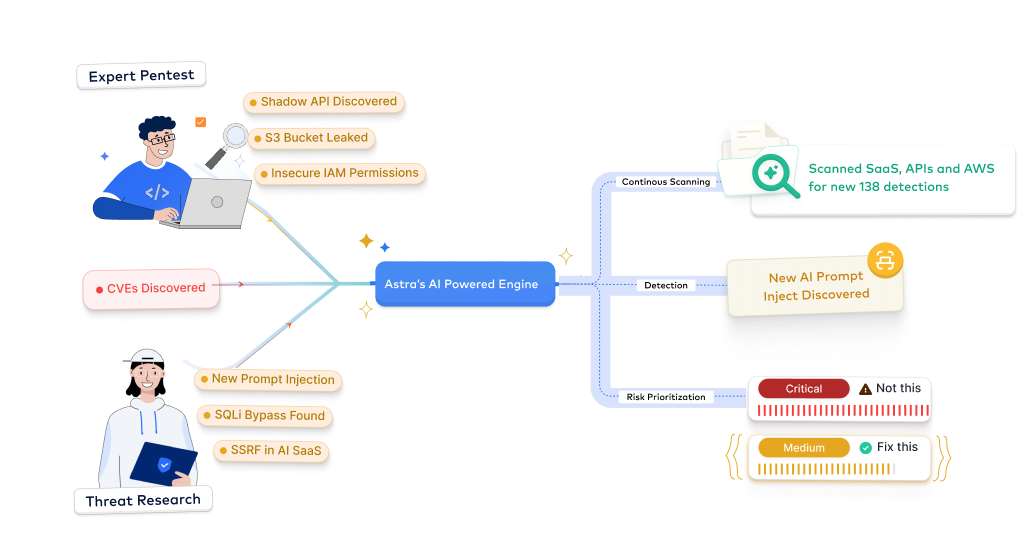
- Generate detailed scan reports with vulnerabilities mapped to ISO, PCI, SOC 2, HIPAA, GDPR, OWASP, NIST, and other standards
- Demonstrate security maturity to shorten sales cycles
- Turn compliance readiness into a sales advantage

Simulate real-world attacks, uncover hidden risks, and strengthen your defenses with expert-led managed vulnerability scanning services for just $199.
Start TrialAstra's 7-Step Pentest Process
How our vulnerability scanning works?
Our 6-step approach delivers more than just vulnerability data. It gives you prioritized findings, context, and fix support through continuous scanning and expert validation.
Discovery & Scoping
- Identify all in-scope applications, APIs, domains, and subdomains for testing
- Define parameters, environments, and integrations to ensure complete coverage
- Align the assessment scope with relevant compliance frameworks such as PCI DSS, ISO 27001, SOC 2, or HIPAA
- Personalized setup to maintain visibility throughout the engagement
Outcome: Outline a mutually-agreed compliance-guaranteed scope and a clear roadmap to audit readiness


Authentication Setup
- Establish secure authentication workflows for behind-login testing across user roles, APIs, and SSO flows
- Integrate credentials, tokens, and session configurations to enable deep authenticated coverage
- Ensure safe testing within staging or production replicas without disrupting business operations
- Standardized authentication templates for future tests to streamline recurring assessments
Outcome: Get full-depth testing coverage without risking business downtime or continuity
Automated Baseline
- Run continuous automated scans across web, API, & cloud layers to detect OWASP Top 10, CVEs, business logic flaws, and misconfigs
- Leverage Astra Security’s tuned detection engine for comprehensive baseline coverage and minimized false positives
- Correlate automated findings with prior assessments to maintain historical visibility
- Deliver continuous monitoring data supporting ongoing compliance & audit preparation
Outcome: Gain a comprehensive, continuous threat baseline ready for immediate action and audit reporting


Risk Scoring
- Request expert vetting for a zero-false-positive vulnerability report
- Evaluate findings using contextual CVSS scoring tied to business impact and compliance relevance
- Highlight vulnerabilities that may delay certifications or create regulatory exposure to prioritize remediation per your risk appetite
- Generate clear risk summaries to guide both technical and executive decision-making
Outcome: Receive prioritized, actionable risk intelligence focused on business & regulatory exposure
Remediation Support
- Deliver detailed, developer-focused remediation steps validated by our expert pentesters
- Provide reproducible PoCs, payloads, and configuration guidance for faster fixes
- Get documented remediation evidence aligned with audit & compliance requirements
Outcome: Achieve faster, verified fixes supported by our team and documented for full compliance


Re-Scan & Validate
- Conduct targeted re-tests to confirm successful remediation and eliminate residual risks
- Schedule recurring scans to detect regressions after updates or infrastructure changes
- Capture time-stamped validation evidence for audit readiness and certification renewals
- Maintain a verified security baseline that demonstrates continuous improvement over time
Outcome: Manage vulnerability management with verified fixes, audit-ready, and continuous scans to prove ongoing security maturity.
From startups to fortune companies,
1000+ companies trust Astra












































.webp)





Experience zero false positives and seamless integrations with Astra Security’s vulnerability management as a service.
Request Security ServicesTypes of managed vulnerability scanning services
Explore our full suite of managed vulnerability assessment services, expertly vetted for every layer of your security stack.

Web Application Security Scanning
- Simulate real-world attacks with our web app vulnerability scanner to uncover OWASP Top 10, CWE, SANS25, MITRE ATT&CK Framework, and more
- Validate fixes quickly with developer-friendly PoCs and automated rescans
- Leverage continuous compliance for ISO, SOC 2, PCI DSS, HIPAA, GDPR, and more

API Security Testing
- Discover shadow, zombie, and undocumented APIs to prevent data leaks and unauthorized access
- Run authenticated scans against REST, SOAP, GraphQL, and backend integrations
- Aligns with OWASP API Top 10, PCI DSS, GDPR, SOC 2, GDPR and more

Cloud Security Testing
- Scan AWS, GCP, and Azure for misconfigurations, privilege escalations, and exposed services
- Provide step-by-step remediation for secure multi-cloud operations
- Get continuous compliance for OWASP Kubernetes Top 10, ISO, SOC 2, CIS Benchmarks, PCI DSS, CSA, and more

Continuous Monitoring
- Schedule scans daily, weekly, or monthly for continuous monitoring
- Track emerging CVEs, validate patches, and monitor security posture across updates
- Receive real-time alerts, continuous scans, and expert validation to stay compliant
- Request vetting by experts to ensure accuracy and minimize false positives

Automated Re-scanning
- Verify fixes automatically to ensure vulnerabilities are fully resolved
- Streamline remediation through a single dashboard for scans and rescans
- Save time by re-scanning only updated or fixed components
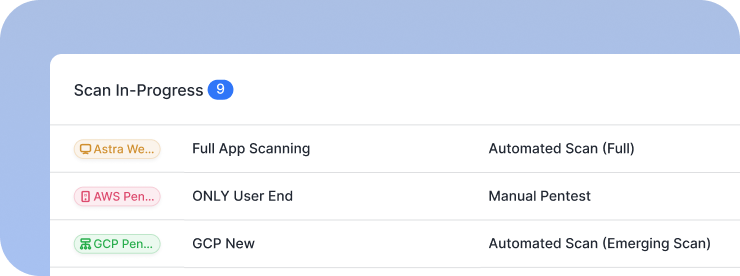
Specialized Vulnerability Scanning Services
- Lightning Scans: Run a high-level scan addressing basic security vulnerabilities
- Emerging Scans: Detect vulnerabilities associated with emerging threats, such as RegreSSHion, Polyfill, Log4Shell, and Text4Shell
- Full scans: Scans all endpoints, including authenticated areas, within 12–24 hours
- Delta scans: Run incremental scans targeting recent changes in your app, boosting performance and minimizing scan duration
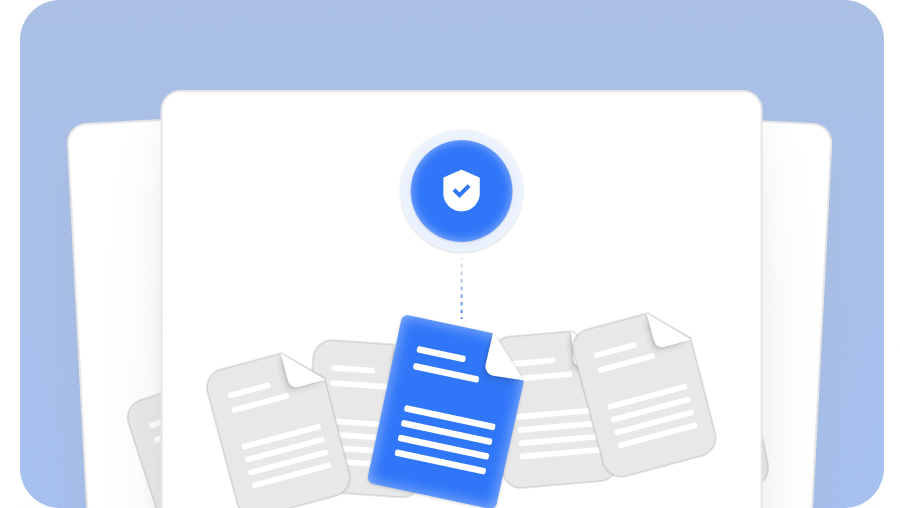




Secure every layer of your digital footprint with Astra Security’s tailored vulnerability scanning services managed by expert vetting.
Book a DemoAstra Security vs traditional vendors
See how our modern approach to managed vulnerability scanning services outpaces traditional vendor models.
Experience the Astra Security difference: faster, smarter, compliance-ready pentesting.
Pentesting as a service, tailored for your industry
Continuous penetration testing and compliance mapping services built for ISO, SOC 2, HIPAA, PCI DSS, and more.

- Secure financial systems and payment workflows from logic flaws
- Deliver actionable fixes and maintain PCI DSS, ISO 27001, SOC 2, DORA compliance, and more
- Standards: OWASP, PTES, CVSS

- Protect patient data and secure APIs across web, mobile, and cloud
- Uncover hidden PHI exposures and validate HIPAA, ABHA, and more
- Standards: OWASP, PTES, NIST, CVSS

- Accelerate app security with DevSecOps integration and continuous scans
- Detect vulnerabilities with AI-driven validation and ensure ISO 27001, SOC 2, GDPR compliance and more
- Standards: OWASP, PTES, CVSS, NIST SP 800-115

- Protect customer data and secure payment flows from BOLA/IDOR risks
- Empower developers with guided remediation and PCI DSS, ISO 27001, SOC 2 compliance and more
- Standards: OWASP, PTES, CVSS

- Fortify cloud, container, and on-prem systems with authenticated tests
- Monitor and validate vulnerabilities to prevent downtime; comply with NIST, ISO 27001, SOC 2, CREST, Cert-In, and more
- Standards: OWASP, PTES, NIST, CVSS

- Discover shadow APIs and secure cloud services
- Deliver fast, developer-friendly fixes; ensure GDPR, ISO 27001, SOC 2 compliance
- Standards: OWASP, PTES, CVSS
Simulate real-world attacks, uncover hidden risks, and strengthen your defenses with expert-led managed vulnerability scanning services for just $199.
Start TrialOur pentesters? World class, certified & contributors to top security projects
We find the bugs before the bad guys do
Our team stays ahead of the curve in the ever-evolving world of web security

.avif)
.avif)
.avif)




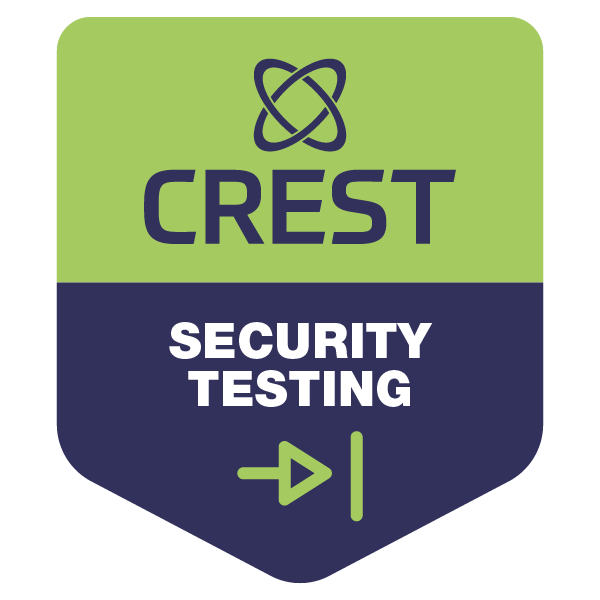
Stay compliant throughout the year
Understand our industry-specific pentests as a service plans designed to meet your compliance, scale, and security needs.
- Get compliance-ready year-round for ISO 27001, SOC 2, GDPR, HIPAA, PCI DSS, CREST, CERT-In, CIS Controls, NIST, & more
- Receive actionable insights from continuous pentesting and expert-led remediation guidance
- Track compliance progress with the Astra Security Compliance View, providing executive-friendly and technical views


- Maintain audit-ready reports without manual effort
- Reduce risk exposure with real-time detection and validation
- Prioritize remediation based on business impact and compliance requirements
- Demonstrate security maturity to clients, regulators, and internal stakeholders


Frequently asked questions
What are managed vulnerability scanning services?
Managed vulnerability scanning services combine automated, continuous scanning with expert vetting and remediation guidance across web, API, and cloud layers, delivering verified findings, prioritized fixes, and audit-ready compliance reporting without requiring in-house security resources.
How do managed vulnerability scans differ from manual scans?
Managed scans combine AI-driven automation with expert validation, reducing false positives, prioritizing risks, and integrating into DevSecOps pipelines. Unlike manual scans, they offer continuous coverage, automated rescans, and vulnerability compliance mapping for faster, actionable, and verified results.
Who needs managed vulnerability scanning?
Organizations of all sizes and industries, Fintech, Healthcare, SaaS, E-Commerce, Critical Infrastructure, Education, benefit from managed scans to secure applications, APIs, and cloud systems, ensure compliance, and accelerate remediation without overburdening security teams.
How often should scans be performed?
Scan frequency depends on application size, business needs, and industry requirements. Delta, emerging, or lightning scans can run daily for rapid coverage, full scans weekly or bi-weekly, and one vetted scan per quarter ensures deep, zero-false-positive validation.
How much do managed vulnerability scanning services cost?
Astra Security’s vulnerability scans start at just $1999 per year, with trial options available for as low as $7. All plans include comprehensive vulnerability scanning, detailed reports, and continuous support, offering businesses an affordable, scalable, and reliable way to strengthen their security posture.
Do they help achieve continuous compliance?
Yes, managed scans map vulnerabilities to standards such as ISO, PCI DSS, SOC 2, HIPAA, and GDPR, generate continuous-compliance reports, track remediation, and provide dashboards for executive and technical compliance visibility year-round. An annual pentest report is still required in addition to the above to achieve and renew compliance certificates.











